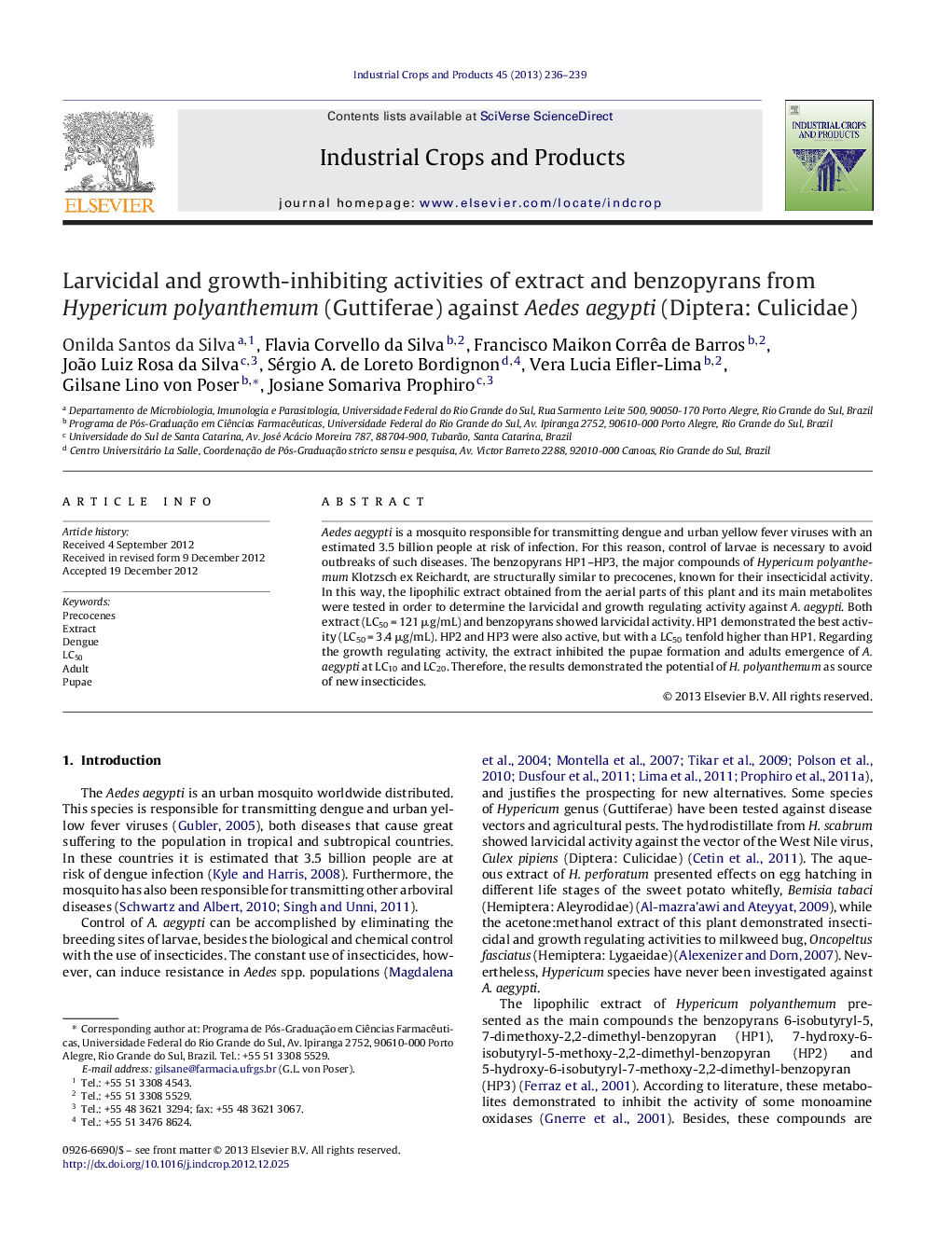| Article ID | Journal | Published Year | Pages | File Type |
|---|---|---|---|---|
| 4514042 | Industrial Crops and Products | 2013 | 4 Pages |
Aedes aegypti is a mosquito responsible for transmitting dengue and urban yellow fever viruses with an estimated 3.5 billion people at risk of infection. For this reason, control of larvae is necessary to avoid outbreaks of such diseases. The benzopyrans HP1–HP3, the major compounds of Hypericum polyanthemum Klotzsch ex Reichardt, are structurally similar to precocenes, known for their insecticidal activity. In this way, the lipophilic extract obtained from the aerial parts of this plant and its main metabolites were tested in order to determine the larvicidal and growth regulating activity against A. aegypti. Both extract (LC50 = 121 μg/mL) and benzopyrans showed larvicidal activity. HP1 demonstrated the best activity (LC50 = 3.4 μg/mL). HP2 and HP3 were also active, but with a LC50 tenfold higher than HP1. Regarding the growth regulating activity, the extract inhibited the pupae formation and adults emergence of A. aegypti at LC10 and LC20. Therefore, the results demonstrated the potential of H. polyanthemum as source of new insecticides.
► New candidates for Aedes aegypti control are proposed. ► The n-hexane extract of Hypericum polyanthemum and its isolated benzopyrans were tested. ► Among the benzopyrans, HP1 was the most larvicidal molecule. ► The n-hexane extract of H. polyanthemum showed growth regulating activity.
